“This is our first soba encounter!”
That’s how we started the first morning of shooting “Family Ingredients” in the first soba shop in Okinawa last April.
Chef Ed Kenney, the playful host of the half-hour series that debuts 7:30 p.m. tonight on PBS Hawai‘i, couldn’t have been more excited to eat one of the most iconic dishes in Okinawa — soki soba — or Okinawan soba — which, by the way has nothing to do with the Japanese buckwheat noodles with the same name. Not at all.
This noodle dish features thick wheat noodles in a clear dashi (broth) made from pork or bonito fish flakes — or a blend of both. The chewy noodles are always thick and sometimes flat or wavy. It all depends on region and preference.
And we were here, in the southernmost prefecture of Japan, to eat a lot of it.
The Emmy Award-winning show, which aired nationally on PBS on June 16, traces the origins of local dishes to their roots around the world. Pipi kaula to California, gandule rice to Puerto Rico, poisson cru to Tahiti. Soki soba to Okinawa. Every dish has a story. That’s the premise of the show.
We were here with Hisae Uki, the daughter of the owners of Sun Noodle, a Hawai‘i-based noodle manufacturer and, incidentally, the only company in the U.S. that makes authentic Okinawan-style soba noodles.
Hisae is an old friend, someone I had met through the local Cherry Blossom Festival. When the producers came to me for suggestions for an Okinawan subject for one of the episodes, Hisae popped into my head. Not only is she half Okinawan — her mom is from the island — but her family business makes soba. Perfect!
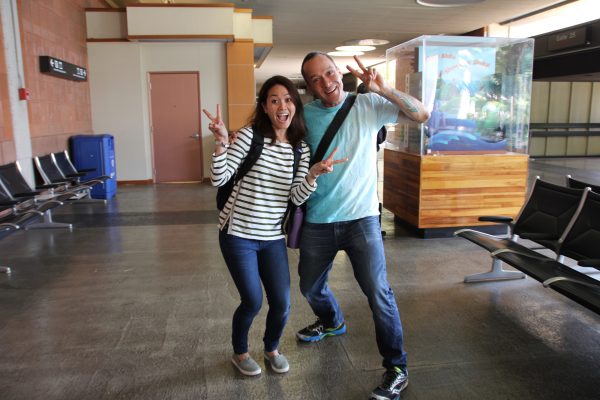
Hisae Uki and Ed Kenney at the Honolulu International Airport last April, getting ready for our flight to Okinawa.
It was going to be a whirlwind of a trip, eating at several soki soba shops in Okinawa, visiting landmarks, touring a noodle manufacturer, walking through markets, interviewing people, finding co-producer Dan Nakasone’s long-lost uncle — all in five days.
And while we were here, I had freelance work to finish, Hisae was managing her company’s LA office and Ed was finalizing the menu — and a million other things — for a new restaurant he was opening, Mud Hen Water, in Kaimukī. (Okinawan soba wound up on the menu there. Of course.)
Oh, and the rest of the crew was working nonstop, editing photos, prepping gear, planning shoots and making sure everyone was on time and on task. It was truly a working trip. No vacation here.
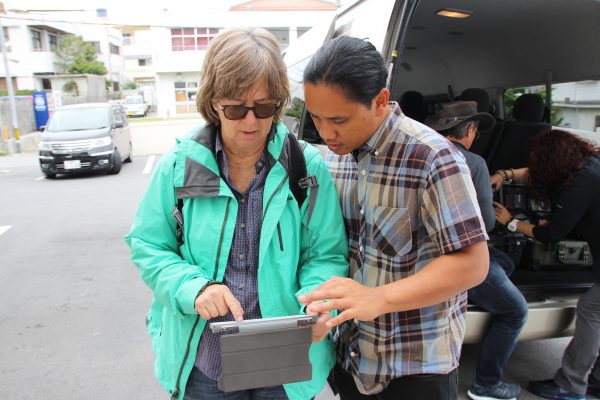
Co-producer and veteran filmmaker Heather Haunani Giugni with director Ty Sanga — working, of course.
I can’t complain, though.
With the help of Chizu Inoue, an editor of a local magazine and our interpreter for the trip, we ate at several of the best soba shops in Okinawa. One that specialized in tonkotsu soba and yushi dōfu (soft tofu), another that featured thin Yaeyama-type noodles run by women, another that was all about the Okinawan soki (pork). And to be honest, I didn’t get tired of eating it, either.
Here’s how it went down: The camera crew went into a shop to set up. The producers met quickly with the restaurant owners, letting them know what we were going to do, what we needed, what to expect. I waited outside, out of the way. Hisae and Ed got prepped. The shot was set. The cameras were on. Action!
Hisae served as translator during the shoots, which was helpful since Ed was deficient in that area. The rest of us stood nearby, snapping photos and staying as quiet as possible. Once the shot was done, everyone grabbed bowls and chopsticks and dug in. It was like that at every shop.
What’s amazing is how generous and friendly people were in Okinawa. We were disruptive and intrusive, with bulky camera gear that needed a lot of space. But no one complained. They smiled, shared their seats, helped us open doors, told us stories. The outpouring was incredible.
We even got to spend some time with Hisae’s mother’s family in Okinawa. What a treat! The family made us its special version of soki soba — among many, many other things — and that was one of our favorite nights together. We all ate and drank and ate more and drank more. It didn’t matter that most of us didn’t speak Japanese (or Okinawan) — we all laughed and hugged and felt that family connection, regardless of language differences.
It was a privilege to be part of this production. Truly. The crew is hard-working, slightly insane, but kind and fun and giving. Some of my best memories are in the van, driving to locations and just talking and laughing. (Ed really hated my playlist and Heather can fall asleep in two seconds.)
You won’t see all of our behind-the-scenes shenanigans, but I’m sure you can sense the camaraderie and closeness everyone shares. Because you can’t hide it. And I think that’s what makes this series so special.
***
“Family Ingredients” premieres on PBS Hawai‘i at 7:30 p.m. tonight. It repeats at 11:30 p.m. tonight and at 4:30 p.m. on Sunday.


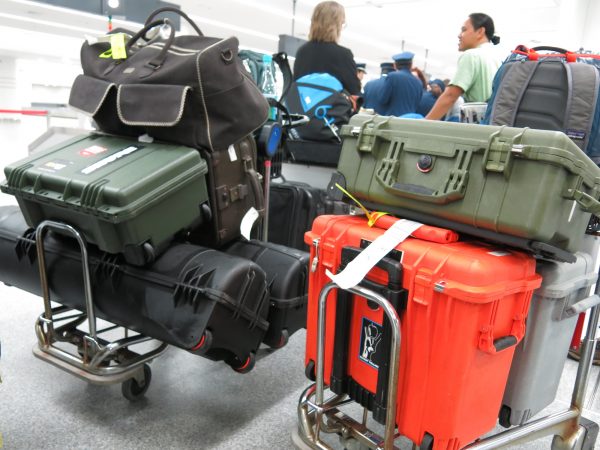
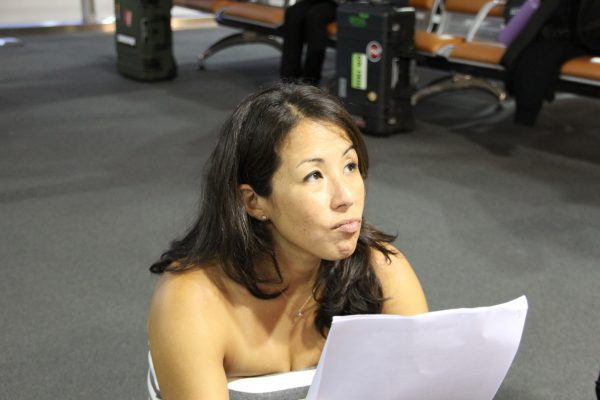
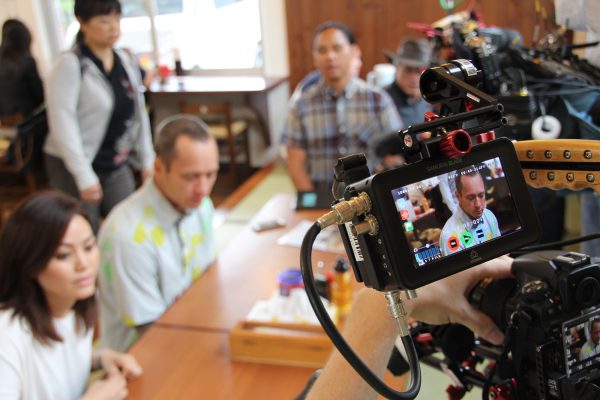
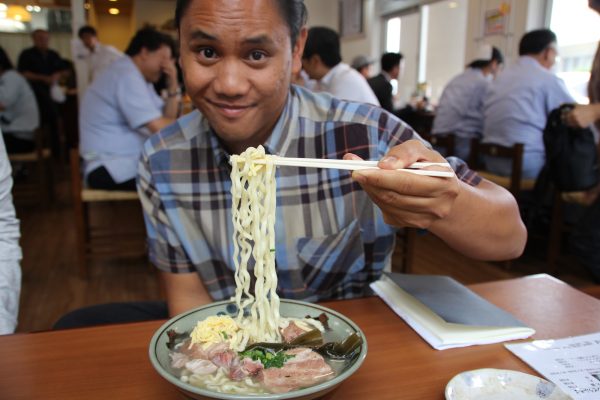
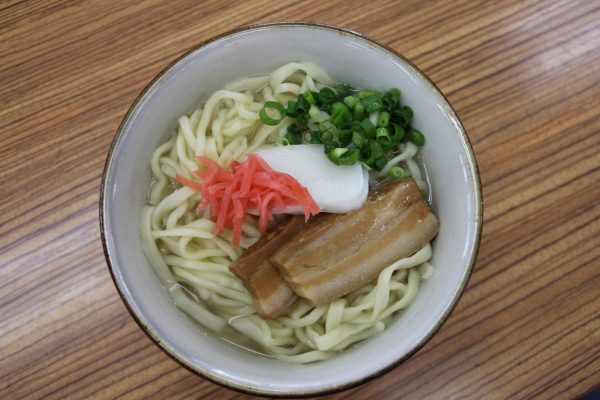
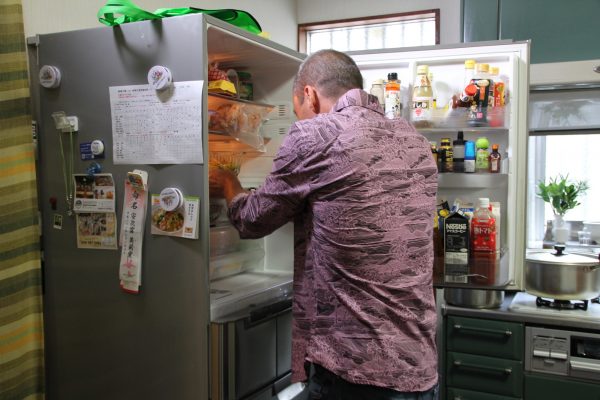



1 Comment
I just wanted to say Hi and introduce myself, I got to your blog via my friend on the Big lsland, the Cozy Shack, then Hatties web, then Gigi Hawaii (all blogs). I love reading your writing and tails about your cute puppies, I even googled and got a recipe from you awhile back for cauliflower curry, which was yummy and I’ve made several times already. I like to look at the photos on your instagram, especially of your fur babies. oh I’ve read some of your (hawaiian)magazine articles too(I’m a bit of a foodie too), I haven’t been over to the islands for 2 years now, last time I rented a house in Puako. My name is Carla and my cats’ blogs is this link. So just Aloha, and Mahalo, keep on writing.